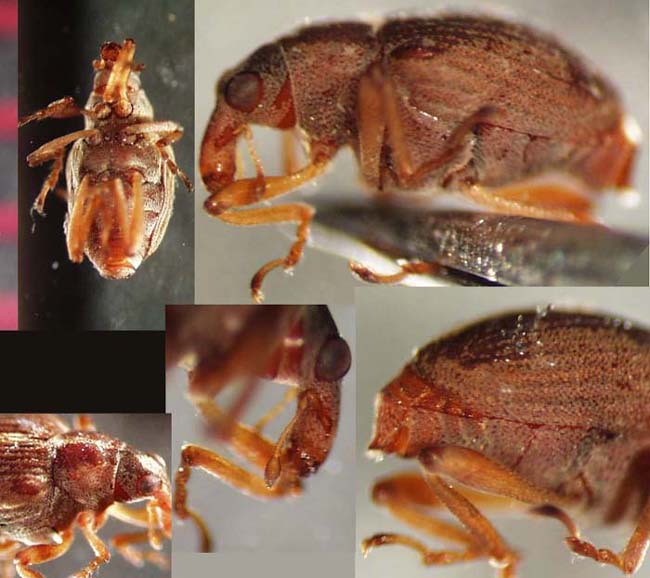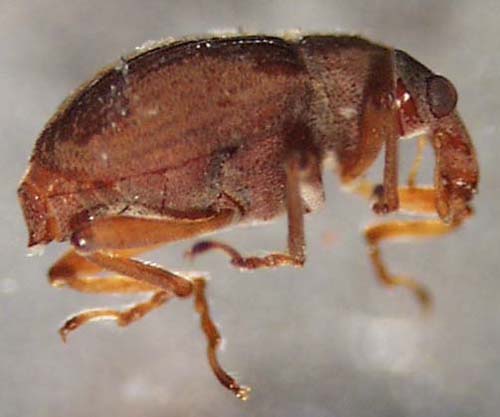
THE XERCES SOCIETY FOR INVERTEBRATE CONSERVATION Aquatic Invertebrates in Pacific Northwest Freshwater Wetlands |
| Identify taxa |
Curculionidae (water weevils) |
|||
Weevils are mostly terrestrial, but a few are semi-aquatic and are typically found crawling on emergent vegetation in still waters. Adults have an unmistakeable curved snout at the front of the head; antennae are attached to the snout and are short, elbowed, and tipped with a club. The larvae are generally grub-like and lack legs or prolegs. One species, Euhrychiopsis lecontei (see images below), has been considered as a possible biological control agent for the introduced and highly invasive Eurasian watermilfoil. The larvae of these weevils burrow into the stems of their milfoil host plants. Our native milfoils have a thick stem that can stand up to the burrowing, but the invasive milfoil has a narrower stem that breaks as the larva burrows. Research in the Pacific Northwest into this potential biological control has been conducted at the University of Washington School of Aquatic and Fishery Sciences. |
Size: medium |
||
 |
 |
|
© 2007 Xerces Society
Contact info@xerces.org
